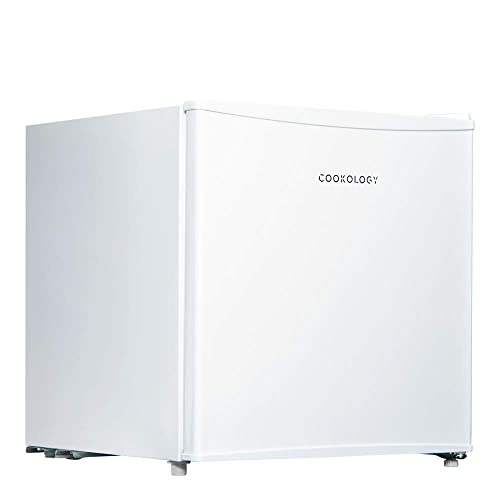본문

The Role and Evolution of Commercial Coolers in the Modern Marketplace
In the dynamic landscape of modern commerce, the role of commercial coolers can not be overemphasized. These essential pieces of equipment are the backbone of various industries, from grocery stores and benefit stores to dining establishments and healthcare centers. This article dives into the significance of commercial coolers, their types, developments, and the impact they have on business operations.
Introduction to Commercial Coolers
Commercial coolers, also referred to as commercial refrigerators, are designed to keep a consistent and controlled temperature environment for the storage of perishable goods. Unlike home refrigerators, commercial coolers are constructed to endure heavy use and are geared up with features that guarantee reliability and Temperature-Controlled Storage (Lovewiki.Faith) effectiveness in high-demand settings. They are vital for maintaining the quality and security of food, drinks, and other temperature-sensitive products.

Types of Commercial Coolers
Cooled Display Cases
- Vertical Coolers: Commonly found in supermarkets and corner store, these units allow customers to see and select items quickly.
- Horizontal Coolers: Often used for showing drinks and small products, these systems can be either open or with glass doors.
Walk-in Coolers
- Walk-in Freezers: Large, room-sized systems designed for bulk storage of frozen items.
- Walk-in Coolers: Similar to walk-in freezers but maintain a higher temperature, ideal for keeping dairy, produce, and other perishables.
Undercounter Coolers
- Bar Coolers: Compact systems designed to fit under bar counters, suitable for storing beverages and mixers.
- Preparation Coolers: Used in kitchen areas for saving ingredients and ready foods.
Bottle Coolers
- Single-Door Coolers: Ideal for small spaces, these units are typically used in workplaces and small retail settings.
- Multi-Door Coolers: Larger units with numerous compartments, suitable for high-volume sales environments.
Reach-in Coolers
- Single-Door Reach-ins: Compact and efficient, these units are ideal for small companies and dining establishments.
- Double-Door Reach-ins: Offer more storage area and are suitable for medium-sized operations.
Improvements in Commercial Coolers
The technology behind commercial coolers has actually advanced significantly throughout the years, resulting in more efficient and sustainable choices. Some notable improvements include:
- Energy Efficiency: modern fridges coolers are developed to consume less energy, minimizing functional expenses and environmental effect. Functions like LED lighting, high-efficiency compressors, and advanced insulation add to this.
- Smart Technology: Many commercial coolers now feature smart functions, such as remote tracking, temperature level notifies, and automated defrost cycles. These innovations boost operational performance and product security.
- Eco-Friendly Refrigerants: The use of eco-friendly refrigerants, such as R-290 (lp) and R-600a (isobutane), is ending up being more widespread, decreasing the carbon footprint of commercial coolers.
- Personalization: Manufacturers are using more personalized choices, permitting services to tailor their coolers to specific needs, such as size, style, and features.
Effect on Business Operations
Commercial coolers play an important role in a number of aspects of company operations:
- Product Preservation: By keeping ideal temperature conditions, coolers ensure that products stay fresh and safe for intake, reducing waste and improving client fulfillment.
- Operational Efficiency: Efficient cooling systems reduce downtime and maintenance costs, allowing services to focus on other crucial operations.
- Consumer Experience: Well-maintained and Stainless Steel Fridges visually pleasing coolers can improve the shopping experience, encouraging clients to make purchases.
- Regulative Compliance: Commercial coolers help businesses meet health and safety policies, making sure compliance and preventing penalties.
FAQs
Q: What is the difference in between a commercial cooler and a family fridge?
- A: Commercial coolers are created for heavy usage and are built with more robust materials and advanced functions to make sure dependability and performance in high-demand settings. Home refrigerators, on the other hand, are created for personal use and are not geared up to deal with the exact same level of use or storage capacity.
Q: Versatile Fridges How can I ensure my commercial cooler is energy effective?
- A: To ensure energy effectiveness, pick a cooler with an Energy Star rating, usage LED lighting, maintain routine cleaning and maintenance, and think about clever functions like remote monitoring and automated defrost cycles.
Q: What are the advantages of using eco-friendly refrigerants in commercial coolers?
- A: Eco-friendly refrigerants, such as R-290 and R-600a, have a lower international warming potential (GWP) and ozone deficiency capacity (ODP) compared to traditional refrigerants. This reduces the ecological effect of commercial coolers and helps companies satisfy sustainability goals.
Q: How typically should I clean and maintain my commercial cooler?
- A: Regular cleansing and maintenance are vital for the ideal efficiency of commercial coolers. It is recommended to clean up the cooler a minimum of once a month and carry out an extensive upkeep check every six months. This includes examining the seals, cleaning up the condenser coils, and guaranteeing the temperature level settings are precise.
Commercial coolers are essential in the modern marketplace, providing important services that guarantee the quality and compact design fridges safety of perishable goods. With advancements in innovation and a growing focus on sustainability, these units are becoming more effective and environmentally friendly. By comprehending the various kinds of commercial coolers and their impact on service operations, owners and managers can make educated choices that benefit both their operations and the environment.
댓글목록
등록된 댓글이 없습니다.